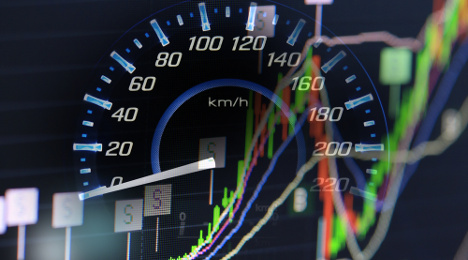Negative auto ABS trends continue in January

Photo by aodaodaodaod/Shutterstock.com
S&P Global Ratings reported on Thursday that collateral performance in the U.S. prime and subprime auto loan asset-backed securities (ABS) sectors continued to weaken in January.
“Surprisingly, delinquencies did not decline from December to January as they usually do,” the firm said in a report sent to SubPrime Auto Finance News. “At the same time, losses and recoveries worsened month-over-month. On a year-over-year basis, both sectors continued to falter, with delinquencies and losses increasing and recoveries declining.
“Even the modified subprime composite, which excludes large, deep subprime pools and had been showing near stable performance, reported year-over-year weakness for the three performance metrics,” analysts added.
S&P Global Ratings indicated that prime net losses increased month-over-month to 0.88 percent in January from 0.76 percent in December. The year-over-year rise stemmed from the reading of 0.63 percent in January of last year.
In fact, analysts pointed out that January's loss rate of 0.88 percent is the highest since January 2010.
“We attribute most of the year-over-year uptick in losses to a couple of regional banks (whose auto loan ABS transactions we began rating in 2014) becoming a slightly larger share of the prime index,” according to the S&P Global Ratings analyst team led by Amy Martin, who again will be one of the experts on hand during the 21st annual Non-Prime Auto Financing Conference orchestrated by the National Automotive Finance Association beginning on May 31.
“Also, not only do these issuers have slightly higher losses than the more-established prime securitizers, but their 2015 securitizations are experiencing weaker performance than their 2014 deals,” the report continued.
“In addition, prime recoveries are declining on a year-over-year basis and this is affecting some of the captive finance pools. Also, as we've stated before, some lenders have normalized their lending standards,” analysts added.
Meanwhile, S&P Global Ratings found that the subprime net loss rate increased to 9.12 percent in January, up from 8.50 percent in December and 7.94 percent recorded during the opening month of 2016. Analysts explained this 118-basis-point year-over-year increase in losses is due to lower recoveries and deep subprime finance companies representing a greater share of the subprime index.
Therefore, as a supplement to its subprime index, S&P Global Ratings created the modified subprime index, which excludes certain high-loss deep subprime issuers (DRIVE, ACA and Exeter Automobile Receivables Trust). However, despite removing the deep subprime issuers, analysts indicated modified subprime net loss rate “does not show a better picture.”
The firm determined losses increased 112 basis points year-over-year to 7.80 percent in January from 6.68 percent a year earlier.
Prime & subprime recoveries deteriorate
S&P Global Ratings noticed the recovery rate for the prime sector decreased in January to 47.85 percent — the lowest reading since January 2010. The rate in December was 51.97 percent and 49.01 percent in January of last year.
Analysts determined subprime recoveries decreased to 34.79 percent in January from 39.89 percent in December.
“While one deep subprime transaction had very lower recoveries during its first month (which is not unusual), two large issuers reported lower average recovery rates on their outstanding deals for January 2017 compared to January 2016,” analysts said.
After netting out the DRIVE, ACA and Exeter transactions, S&P Global Ratings computed that modified subprime recoveries stood 36.73 percent in January but still down from 40.36 percent in December and 41.62 percent in January of last year.
“In our view, lower recovery rates are due to longer loan terms and some lenders increasing their loan-to-value ratios (LTVs), although we've recently seen some improvement in the LTVs on certain subprime auto pools,” the report said.
“Further, the increase in off-lease vehicles has affected used-vehicle values and auction prices,” analysts continued. “We expect used-vehicle values to continue to decline for the next two years due to the high volume of off-lease vehicles, which are projected to reach record levels of 3.6 million units in 2017 and 4.0 million in 2018, up from 3.0 million in 2016 according to Manheim.”
Impact of tax refunds on delinquency
S&P Global Ratings recounted that generally delinquencies decline from December to January due to tax refunds. But the firm found that the prime 60-plus-day delinquency rate increased slightly to 0.57 percent in January from 0.54 percent in December 2016 and 0.53 percent last January. Also, the subprime 60-plus-day delinquency rate was nearly stable at 5.09 percent in January compared to 5.06 percent in December. The subprime reading did tick up from the same month a year earlier when it was 4.66 percent.
Analysts added the modified subprime 60-plus-day delinquency rate inched up slightly to 4.11 percent from 3.93 percent in December and 3.85 percent for January of last year.
S&P Global Ratings recapped the situation Cox Automotive chief economist Webb explained, too. Tax refunds involving the Earned Income Tax Credit or the Additional Child Tax Credit were held until Feb. 15 this year, and as a result, year-to-date tax refunds though Feb. 10 were down 69%, or $65 billion.
“This likely contributed to higher month-over-month delinquencies in January. We expect them to decline in February,” S&P Global Ratings analysts said.

 View The Latest Edition
View The Latest Edition

